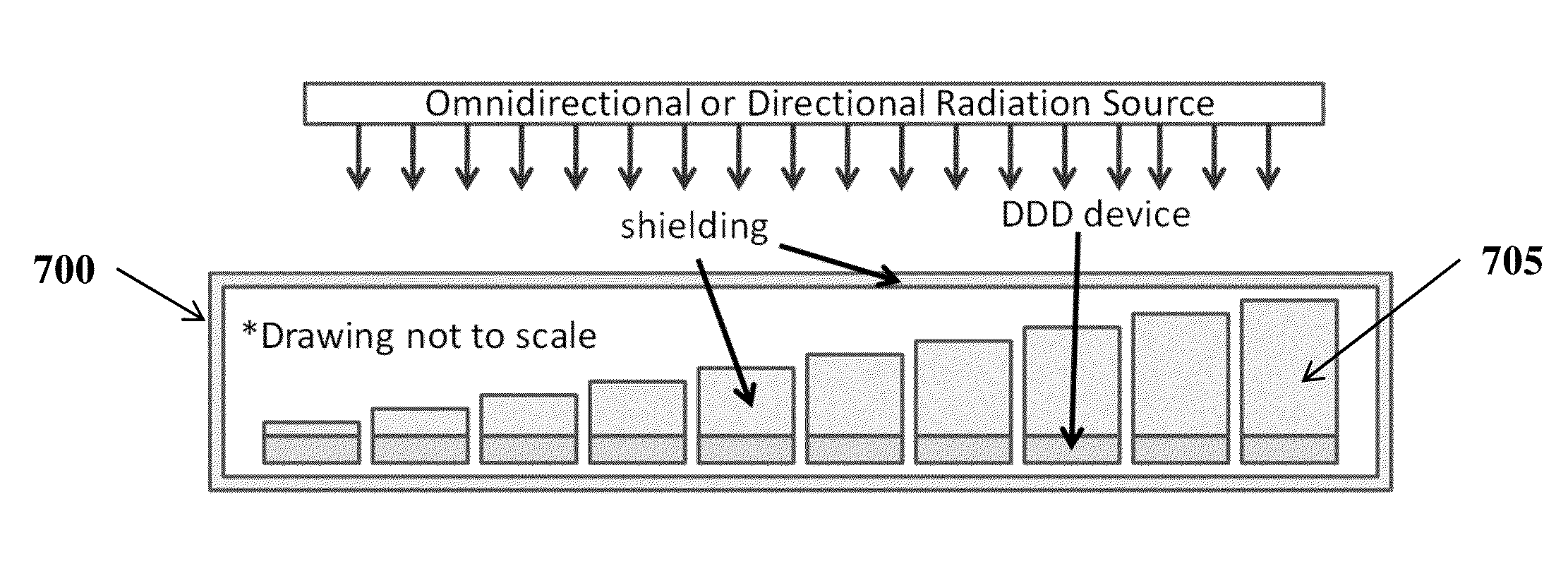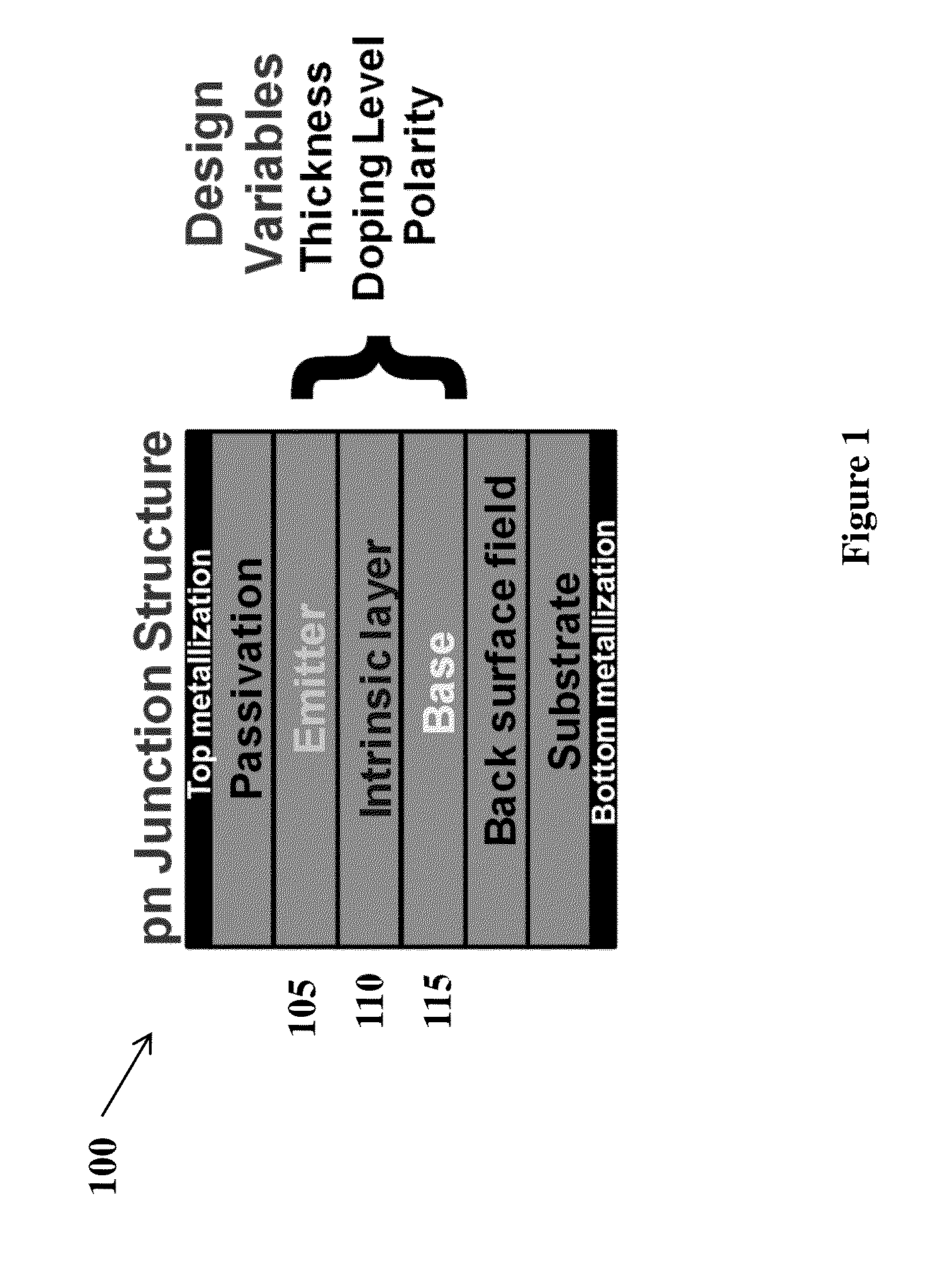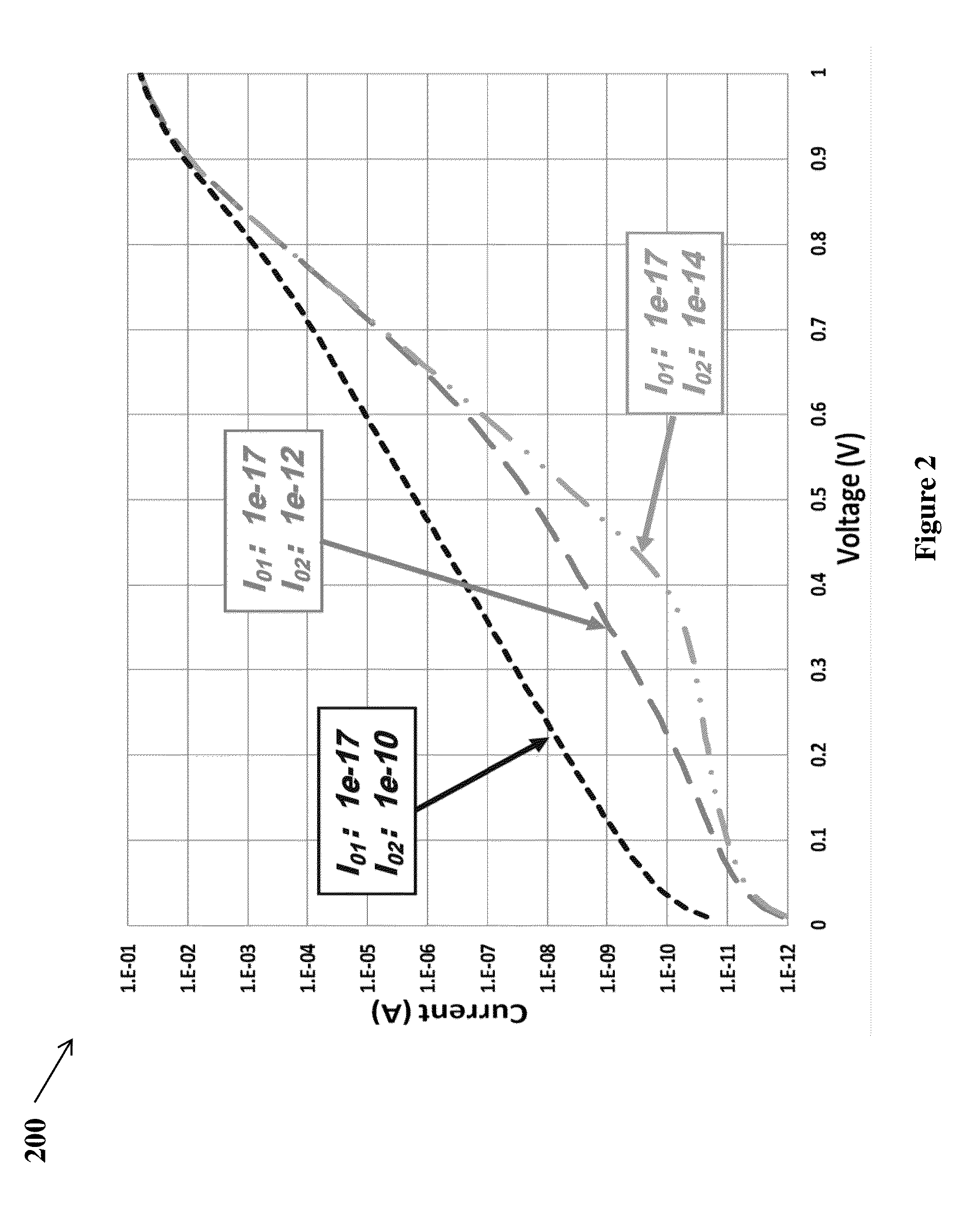Microelectronic Displacement Damage Dose Detector
a technology of microelectronic displacement and detector, applied in the direction of optical radiation measurement, photometry using electric radiation detector, instruments, etc., can solve the problems of increasing risk, increasing radiation exposure, and reducing the service life of standard integrated circuits
- Summary
- Abstract
- Description
- Claims
- Application Information
AI Technical Summary
Benefits of technology
Problems solved by technology
Method used
Image
Examples
Embodiment Construction
[0026]One or more embodiments or implementations are hereinafter described in conjunction with the drawings, where like reference numerals refer to like elements throughout, and where the various features are not necessarily drawn to scale.
[0027]Similarly, to the JPL model discussed above, the Naval Research Laboratory (NRL) developed a technique to predict on-orbit performance based on displacement damage dose with the results comparing well to the JPL model. The NRL model demonstrated that, using the calculated nonionizing energy loss (NIEL) to correlate displacement damage radiation effects due to different energetic particles, ground-based radiation data can be reduced to two, characteristic radiation degradation, or damage, curves. One of the curves can be for proton and neutron damage, and the other one can be for equivalent 1 MeV electrons. The NRL model implied that the characteristic curves could be obtained using much less ground testing; thereby saving significant time an...
PUM
 Login to View More
Login to View More Abstract
Description
Claims
Application Information
 Login to View More
Login to View More - R&D
- Intellectual Property
- Life Sciences
- Materials
- Tech Scout
- Unparalleled Data Quality
- Higher Quality Content
- 60% Fewer Hallucinations
Browse by: Latest US Patents, China's latest patents, Technical Efficacy Thesaurus, Application Domain, Technology Topic, Popular Technical Reports.
© 2025 PatSnap. All rights reserved.Legal|Privacy policy|Modern Slavery Act Transparency Statement|Sitemap|About US| Contact US: help@patsnap.com



